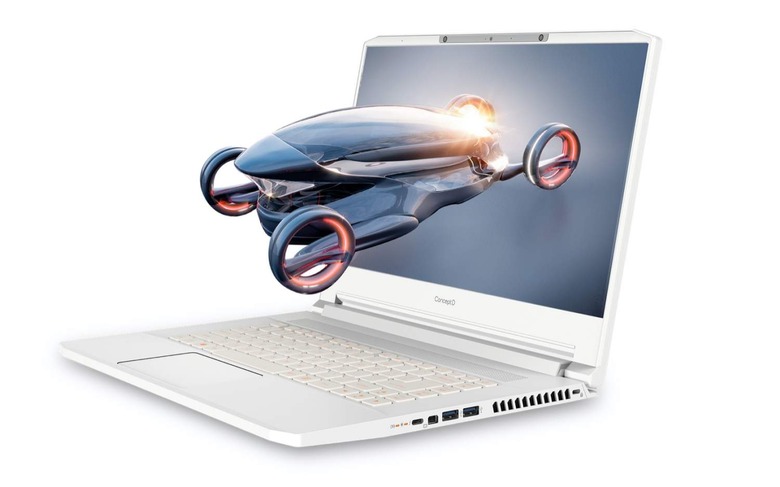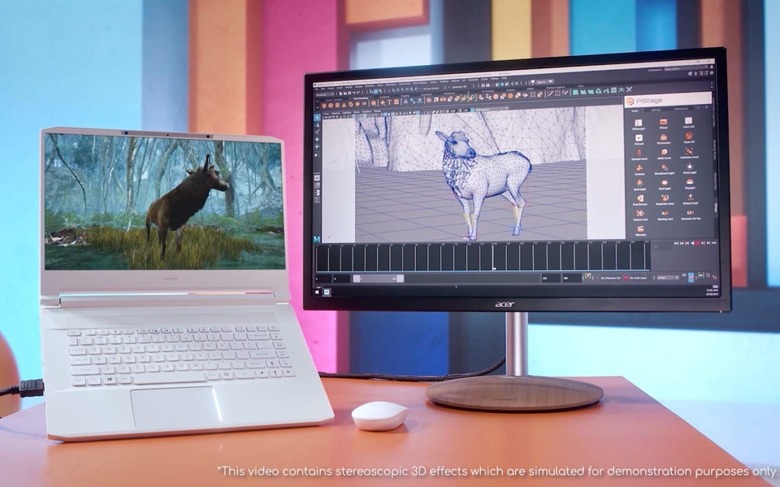Acer's SpatialLabs Is Glasses-Free 3D In A Prototype Laptop
Acer wants to bring stereoscopic 3D to laptops, with a new SpatialLabs display that promises to float graphics right out of a laptop's screen without demanding you wear special glasses to see them. The system instead combines a switchable lenticular lens screen with an eye-tracking camera, all fitted into a prototype ConceptD notebook.
3D certainly isn't new, and neither are attempts to bring it to graphics pros in a usable way. The reality, though, is that clunky glasses and mediocre visual quality has generally undermined such efforts.

Acer thinks SpatialLabs is different. The screen is an Ultra HD resolution 2D panel, with a liquid crystal lenticular lens that's been optically bonded on top of it. That can switch the screen between 2D to 3D modes, with an eye-tracking stereo camera array at the top of the display deciding how to split up the graphics for each eye.
The result is the ability to "float" visuals off the surface of the display. We've seen something similar in automotive applications, in fact, with Genesis' 3D instrument cluster using the same approach to make virtual dials that have a perceived depth to them. Acer, though, is pushing it as a way for 3D designers to get a much more intuitive view of their handiwork, with support for rotating, moving, and enlarging three-dimensional models.

"Being able to see their creations in stereoscopic 3D at a 1:1 ratio speeds up the process of finding issues and ensuring that a 3D design matches their original concept design," Acer suggests. "For example, product designers can use the SpatialLabs Model Viewer to get an idea of what the item they are making will look like before investing the time and resources to print or tool it. Additionally, functions like the ability to change a model's HDRI background allow them to be presented in a natural, realistic environment."
By default, the Acer ConceptD SpatialLabs prototype notebook uses the 2D mode for the maximum resolution. However when apps that use the SpatialLabs Experience Center are loaded, it automatically switches to 3D mode. There's a 3D model viewer which supports the major formats like Blender and Autodesk Fusion 360, and which automatically moves the model around as the viewer moves their head.

SpatialLabs Go, meanwhile, is Acer's own system for rendering side-by-side full screen content into 3D. Once you've created a Blender object, for example, Acer's tool can then convert it to a 3D format that the special display can show. A native side-by-side stereoscopic 3D video player is included, too.
Finally, there's PiStage for Maya. That bypasses the back-and-forth rendering pipeline, instead showing content in 3D in real-time. SpatialLabs supports Unreal Engine, too.
For the moment, Acer isn't intending to sell its ConceptD SpatialLabs prototype notebook generally. Instead, it'll be offering three month loans of the hardware to participants of the SpatialLabs Developer Program, getting feedback on what a production device might look and perform like, as well as building up 3D projects to demonstrate the systems' worth. Applications are open now, and will close on June 30.
